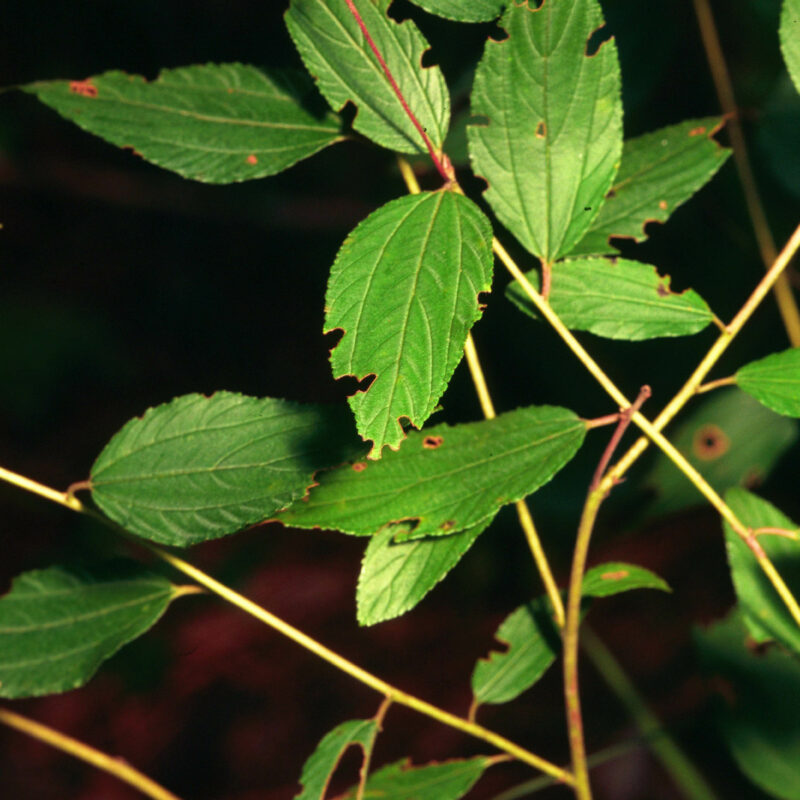New Jersey TeaCeanothus americanus
New Jersey Tea is a low-growing shrub with deep roots, making it quite drought-tolerant but difficult to transplant. It produces delicate white flowers that attract many pollinators.
USDA symbol: CEAM
General Information
| Plant Type | Shrub |
|---|---|
| Height | 2 to 3 feet |
| Light Exposure | Sun, Part Sun |
| Soil Moisture | Dry |
| Bloom Color | White |

Tolerances
| Flooding / Inundation Tolerance | Moderate |
|---|---|
| General Resilience | 5 |
| Salt Tolerance | High |
| Stress Tolerance | Drought Tolerant, Fire Tolerant |
Pollinator Value: Very High
| Bloom Months | June to July |
|---|---|
| Larval Host of | Bees, Butterflies, Moths |
| Specific Pollinators Hosted | Ancylis semiovana, Apodrepanulatrix liberaria, Erastria coloraria, Erynnis martialis, Protandrena pauper |
| Pollinator Benefit | Insect Pollinated, Provides Nectar, Supports Generalists |
Project Planning
| Project Type | Rain Garden, Shoreline Buffer |
|---|---|
| Coefficient of Conservatism | 8 |
| Herbivore Sensitivity | Medium |
| Lifespan | Perennial |
| Rate of Spread | Slow |
| Soil Stabilization | Deep |
| Vegetative Reproduction | Clonal |
Range
| County | Aitkin, Anoka, Becker, Benton, Blue Earth, Brown, Carver, Cass, Chisago, Cook, Cottonwood, Crow Wing, Dakota, Dodge, Faribault, Fillmore, Freeborn, Goodhue, Hennepin, Houston, Isanti, Itasca, Jackson, Kandiyohi, Le Sueur, Mille Lacs, Morrison, Mower, Nicollet, Olmsted, Otter Tail, Pine, Ramsey, Redwood, Rice, Sherburne, St. Louis, Stearns, Steele, Todd, Wabasha, Waseca, Washington, Winona, Wright |
|---|---|
| Ecoregion | Driftless Area, Lake Agassiz Plain, North Central Hardwood Forests, Northern Glaciated Plains, Northern Lakes and Forests, Northern Minnesota Wetlands, Western Cornbelt Plains |
| Approximate Eco Province | Eastern Broadleaf Forest, Laurentian Mixed Forest, Prairie Parkland, Tallgrass Aspen Parklands |
